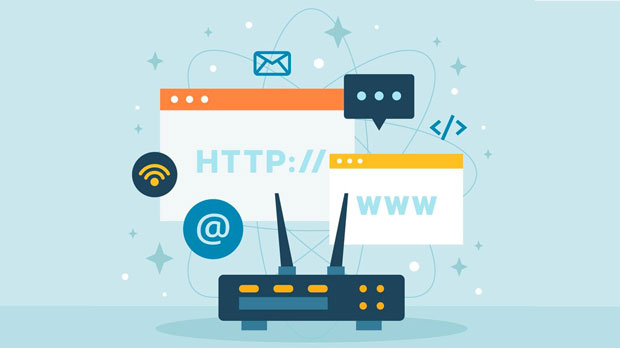The education network in many regions, particularly in China, is subject to certain restrictions that can hinder students and professionals from accessing global information resources. To bypass these limitations, various proxy protocols are employed, each with its advantages and drawbacks. Choosing the most suitable proxy protocol is critical for ensuring both efficiency and security. Introduction to Proxy Protocols for Education Network AccessProxy protocols are methods used to mask a user's actual IP address, enabling them to access blocked websites and content. In the context of education networks, these protocols can be a useful tool for bypassing restrictions on academic resources or online platforms. The most common types of proxy protocols include HTTP, SOCKS, and VPN (Virtual Private Network). Understanding the differences between these protocols is key to selecting the best option for accessing the education network while maintaining security and performance.Overview of Common Proxy ProtocolsSeveral proxy protocols are commonly used to circumvent network restrictions. Let's examine some of the most popular options:1. HTTP ProxyHTTP proxies work by forwarding requests from a client to a server through an intermediary. This type of proxy protocol is typically used for web browsing, where the client requests a website, and the proxy server makes the request on behalf of the client. The HTTP proxy then returns the requested web page to the user.The main advantage of using an HTTP proxy for education network access is its ease of use and widespread compatibility with most web browsers. However, HTTP proxies are limited in functionality. They only support HTTP traffic and can’t handle other types of internet communication like email or file transfers.For educational institutions, an HTTP proxy can be sufficient for unlocking websites and online resources. However, its limitations may make it less ideal for more complex tasks like accessing multimedia content or performing academic research that requires secure, encrypted communication.2. SOCKS ProxySOCKS (Socket Secure) proxies are a more versatile type of proxy protocol compared to HTTP proxies. Unlike HTTP proxies, which are limited to web traffic, SOCKS proxies can handle all kinds of internet traffic, including emails, FTP, and peer-to-peer connections. SOCKS5, the latest version of this protocol, also offers support for advanced features such as encryption and authentication, which enhance security.One of the main advantages of SOCKS proxies is their flexibility and ability to handle a wide range of internet protocols. For users looking to bypass restrictions on education networks, SOCKS proxies provide a more reliable and secure option, especially when dealing with more complex access needs such as downloading files, accessing blocked academic databases, or using online educational platforms.The downside of SOCKS proxies is that they may require more advanced configuration compared to HTTP proxies, making them less user-friendly for beginners. Additionally, they tend to have slightly lower speeds due to the added encryption and security features.3. VPN (Virtual Private Network)A VPN is one of the most secure and effective solutions for unlocking education network restrictions. VPNs work by creating an encrypted tunnel between the user’s device and a remote server. This tunnel prevents third parties, including education network administrators, from monitoring or restricting the user’s internet activities.The key benefit of a VPN is its ability to provide robust security and anonymity. When accessing the education network, users can bypass restrictions on educational resources and websites without risking their privacy. VPNs are highly versatile and support all types of internet traffic, including browsing, file sharing, video streaming, and more. They also provide additional security by encrypting the data transmitted between the user and the server, making it difficult for hackers or network administrators to intercept sensitive information.However, VPNs can be slower than other proxy solutions due to the encryption process, which may impact browsing speed, especially for high-bandwidth activities. Additionally, some education networks may actively block or throttle VPN connections, making it essential for users to choose a reliable and stealthy VPN provider.4. ShadowsocksShadowsocks is a protocol that has gained popularity among users looking to bypass internet censorship, especially in regions with strict online monitoring and restrictions. Originally designed to circumvent the Great Firewall of China, Shadowsocks is based on the SOCKS5 protocol but with added obfuscation features to hide the fact that it is being used as a proxy.Shadowsocks is highly efficient at bypassing education network restrictions, as it is specifically designed to avoid detection by network administrators. Its lightweight design means that it does not introduce significant latency, making it suitable for users who need fast access to educational resources. Additionally, Shadowsocks offers strong encryption and can be configured to blend in with regular internet traffic, making it less likely to be detected or blocked by education network filters.However, setting up Shadowsocks can be more complicated than using traditional proxy solutions, and it may require advanced technical knowledge. Despite this, for users seeking an efficient, secure, and relatively fast method to bypass education network restrictions, Shadowsocks is a powerful option.5. Tor (The Onion Router)Tor is a decentralized network that routes internet traffic through a series of volunteer-operated servers, providing strong anonymity and privacy. While Tor is often associated with anonymous browsing, it can also be used to bypass network restrictions, including those imposed on education networks.Tor’s primary advantage is its exceptional focus on privacy. By routing traffic through multiple nodes, it makes it difficult to trace the user’s activity back to their location. However, Tor is known for its slower speeds compared to other proxies due to the multiple layers of encryption and routing involved in the process.For users focused primarily on privacy and anonymity rather than speed, Tor can be a valuable tool for unlocking educational content and bypassing restrictions. However, for high-bandwidth activities such as video streaming or real-time access to online courses, Tor may not be the best choice due to its speed limitations.Choosing the Best Proxy Protocol for Education Network AccessWhen selecting the best proxy protocol for unlocking education network restrictions, users must consider a variety of factors, including security, speed, ease of use, and the type of content they wish to access.For most users, a socks5 proxy or VPN offers the best combination of security, speed, and versatility. VPNs are ideal for users who require strong encryption and a broad range of internet activities, while sock s5 proxies are a good choice for users who need flexibility and do not mind a slight reduction in speed.If security and stealth are the main priorities, Shadowsocks provides an excellent balance between performance and security, making it one of the top choices for bypassing education network restrictions.In conclusion, there is no one-size-fits-all answer when it comes to choosing the best proxy protocol for unlocking education network restrictions. The best choice depends on individual needs and priorities. For users seeking strong encryption and reliable performance, a VPN is the best option. However, for those who prioritize flexibility and speed, a SOCKS proxy or Shadowsocks might be more suitable. By understanding the strengths and weaknesses of each protocol, users can make an informed decision that meets their needs for accessing educational resources and bypassing network restrictions.
Jun 24, 2025






















































